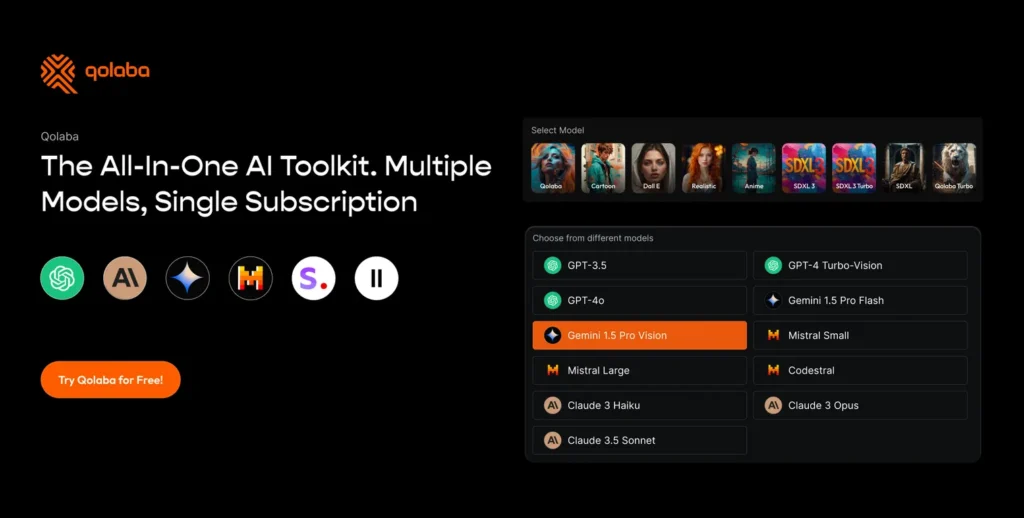Your finance team tracks the obvious costs: ChatGPT Plus at $20 per user, Claude Pro at $20, maybe a few specialized AI tools. They see clear line items and budget accordingly.
What they don’t account for are the hidden productivity costs that research shows can significantly exceed subscription fees—costs that smart companies are eliminating through strategic consolidation.
The Context Switching Problem
Research-Backed Productivity Loss
Carnegie Mellon University research demonstrates that task switching can reduce productivity by up to 40%. For teams using multiple AI tools, this manifests as constant platform switching throughout daily workflows.
Typical AI Tool Switching Pattern:
- ChatGPT for initial content creation
- Claude for analytical tasks
- Specialized tools for image generation
- Different platforms for specific use cases
- Manual coordination between outputs
The Academic Evidence: Studies on “attention residue” show that when switching between tasks or tools, part of our attention remains stuck on the previous task, reducing cognitive performance on the new task.

Administrative Complexity Multiplication
The Management Overhead Reality
Each additional software subscription creates administrative tasks that research from software management firms shows can consume significant IT and administrative resources:
Per-Tool Administrative Requirements:
- User account provisioning and management
- Security compliance and password policies
- Subscription renewal cycles and budget approvals
- Usage monitoring and cost optimization
- Integration maintenance and troubleshooting
Industry Data: Software asset management studies indicate that organizations typically underestimate the administrative overhead of managing multiple software subscriptions by 60-80%.
Real-World Workflow Fragmentation
The Integration Challenge
Different AI platforms operate in isolation, creating workflow bottlenecks that impact project timelines and team efficiency.
Common Integration Pain Points:
- Manual data transfer between platforms
- Context recreation for each new tool
- File format conversions and compatibility issues
- Inconsistent user interfaces requiring separate learning curves
- Quality control across multiple AI outputs
Project Impact: Teams report that coordinating outputs from multiple AI tools can extend project timelines by 25-50% compared to integrated workflows.
The Learning Curve Multiplication
Training and Adoption Costs
Each AI tool introduces its own interface, features, and best practices, multiplying training requirements.
Educational Technology Research shows that learning multiple similar tools creates “interference effects” where knowledge of one platform can actually slow learning of another similar platform.
Team Impact Areas:
- Initial tool training and onboarding
- Ongoing feature updates and changes
- Best practice development for each platform
- Troubleshooting and support requests
- Knowledge management across tools
Industry Consolidation Trends
Why Companies Are Streamlining
Software Industry Analysis: Gartner research indicates that organizations are increasingly moving toward platform consolidation to reduce complexity and improve efficiency.
Common Consolidation Benefits Reported:
- Simplified user experience and reduced training time
- Streamlined billing and subscription management
- Improved workflow integration and collaboration
- Reduced security complexity and compliance overhead
- Enhanced usage analytics and optimization opportunities
The Qolaba Consolidation Approach

Unified Platform Architecture
Instead of managing multiple AI subscriptions, Qolaba provides comprehensive AI capabilities through a single platform, eliminating the hidden costs associated with tool fragmentation.
Key Consolidation Benefits:
- Single Interface Access: Multiple AI models accessible through one consistent interface
- Integrated Workflows: Seamless transitions between different AI capabilities
- Unified Administration: One subscription, one renewal cycle, one user management system
- Usage-Based Pricing: Pay for consumption rather than per-seat subscriptions across multiple tools
Real Implementation Example
Before Consolidation: A design agency managing separate subscriptions for text generation, image creation, and analysis tools reported significant time spent on tool coordination and administrative overhead.
After Consolidation: The same agency using Qolaba’s unified platform reported improved project flow, reduced administrative burden, and simplified team training.
Strategic Implementation Approach
Assessment Phase
Start by documenting your current AI tool landscape:
- List all AI subscriptions and their purposes
- Track how frequently team members switch between tools
- Note workflow bottlenecks caused by tool fragmentation
- Document administrative time spent managing multiple subscriptions
Evaluation Phase
Consider consolidation options:
- Map your team’s AI requirements to available unified platforms
- Test integrated workflows with pilot projects
- Compare total cost of ownership including hidden costs
- Evaluate team training and adoption requirements
Implementation Phase
Execute gradual migration:
- Begin with teams experiencing the most tool fragmentation
- Provide comprehensive training on unified workflows
- Monitor productivity improvements and cost optimization
- Scale successful patterns across the organization
Signs Your Team Needs AI Consolidation
Productivity Indicators:
- Team members frequently asking which AI tool to use for specific tasks
- Projects slowing down due to coordination between AI tool outputs
- Repeated training sessions for different AI platforms
- Administrative complaints about managing multiple AI subscriptions
Financial Indicators:
- Growing number of AI-related line items in software budgets
- Difficulty tracking and optimizing AI usage across platforms
- Subscription renewal chaos with different cycles and vendors
- Budget requests for additional specialized AI tools
The Competitive Advantage
Market Differentiation Through Efficiency
Companies successfully consolidating their AI tools report competitive advantages through:
- Operational Efficiency: Streamlined workflows that reduce project timelines and improve client satisfaction
- Team Satisfaction: Simplified tool management that allows focus on creative and strategic work rather than platform coordination
- Cost Optimization: Clearer visibility into AI usage and costs enabling better budget allocation and ROI measurement
- Scalability: Easier onboarding of new team members with single-platform training requirements
Making the Transition
Risk-Free Evaluation
The most effective way to understand consolidation benefits is through hands-on testing with real workflows and projects.
Recommended Approach:
- Start with a small pilot team using unified AI platforms
- Run parallel workflows comparing fragmented vs. consolidated approaches
- Measure actual productivity differences and hidden cost elimination
- Scale successful implementations across the organization
Moving Beyond Tool Chaos
Multiple AI subscriptions create complexity that extends far beyond visible costs. The hidden productivity drains, administrative overhead, and workflow fragmentation can significantly impact team efficiency and project outcomes.
Smart companies are moving toward consolidated AI platforms that eliminate these hidden costs while maintaining or expanding AI capabilities.
The strategic question isn’t whether to use AI tools, it’s whether to manage AI tool complexity or eliminate it through thoughtful consolidation.





